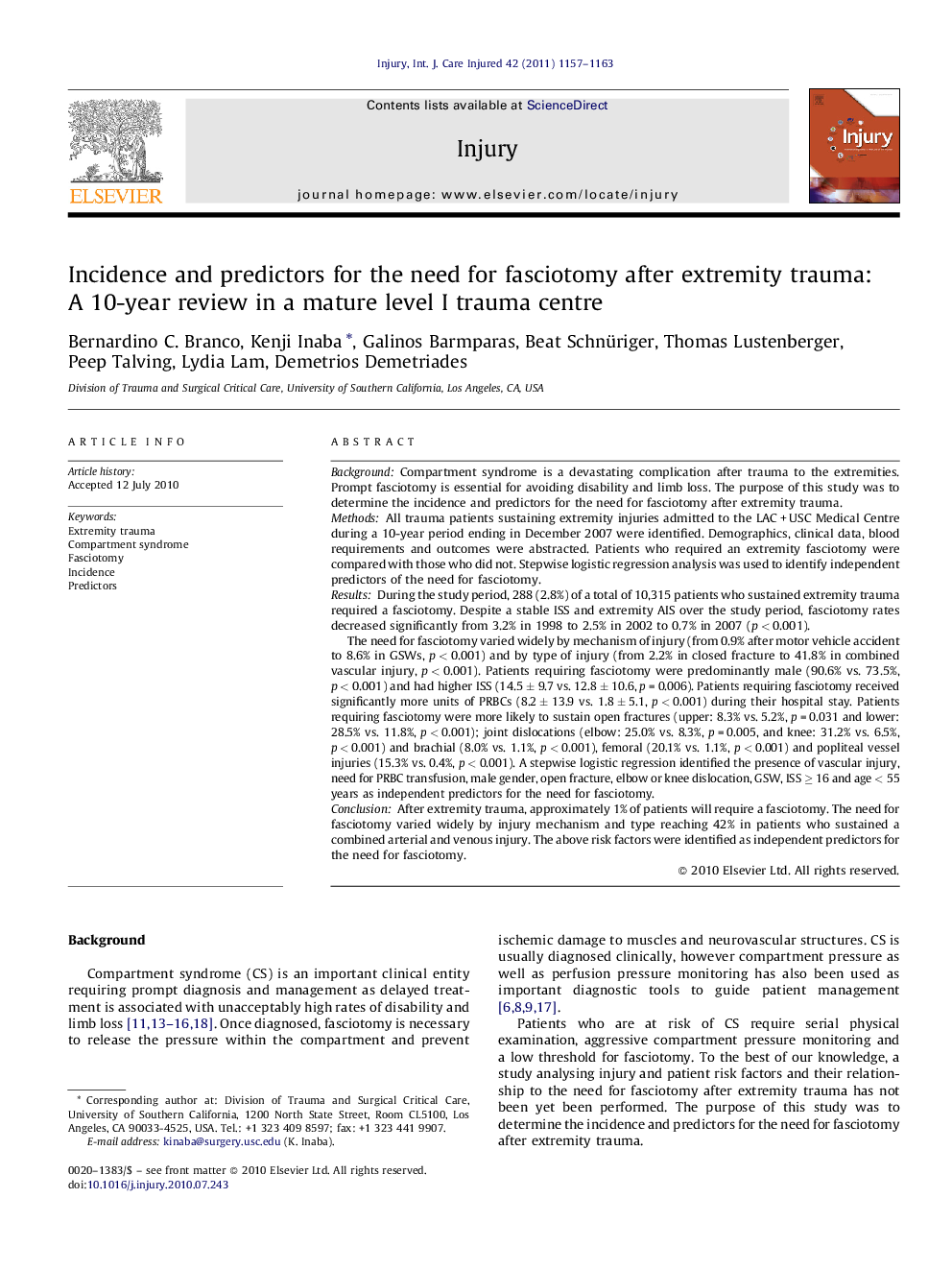| Article ID | Journal | Published Year | Pages | File Type |
|---|---|---|---|---|
| 3240937 | Injury | 2011 | 7 Pages |
BackgroundCompartment syndrome is a devastating complication after trauma to the extremities. Prompt fasciotomy is essential for avoiding disability and limb loss. The purpose of this study was to determine the incidence and predictors for the need for fasciotomy after extremity trauma.MethodsAll trauma patients sustaining extremity injuries admitted to the LAC + USC Medical Centre during a 10-year period ending in December 2007 were identified. Demographics, clinical data, blood requirements and outcomes were abstracted. Patients who required an extremity fasciotomy were compared with those who did not. Stepwise logistic regression analysis was used to identify independent predictors of the need for fasciotomy.ResultsDuring the study period, 288 (2.8%) of a total of 10,315 patients who sustained extremity trauma required a fasciotomy. Despite a stable ISS and extremity AIS over the study period, fasciotomy rates decreased significantly from 3.2% in 1998 to 2.5% in 2002 to 0.7% in 2007 (p < 0.001).The need for fasciotomy varied widely by mechanism of injury (from 0.9% after motor vehicle accident to 8.6% in GSWs, p < 0.001) and by type of injury (from 2.2% in closed fracture to 41.8% in combined vascular injury, p < 0.001). Patients requiring fasciotomy were predominantly male (90.6% vs. 73.5%, p < 0.001) and had higher ISS (14.5 ± 9.7 vs. 12.8 ± 10.6, p = 0.006). Patients requiring fasciotomy received significantly more units of PRBCs (8.2 ± 13.9 vs. 1.8 ± 5.1, p < 0.001) during their hospital stay. Patients requiring fasciotomy were more likely to sustain open fractures (upper: 8.3% vs. 5.2%, p = 0.031 and lower: 28.5% vs. 11.8%, p < 0.001); joint dislocations (elbow: 25.0% vs. 8.3%, p = 0.005, and knee: 31.2% vs. 6.5%, p < 0.001) and brachial (8.0% vs. 1.1%, p < 0.001), femoral (20.1% vs. 1.1%, p < 0.001) and popliteal vessel injuries (15.3% vs. 0.4%, p < 0.001). A stepwise logistic regression identified the presence of vascular injury, need for PRBC transfusion, male gender, open fracture, elbow or knee dislocation, GSW, ISS ≥ 16 and age < 55 years as independent predictors for the need for fasciotomy.ConclusionAfter extremity trauma, approximately 1% of patients will require a fasciotomy. The need for fasciotomy varied widely by injury mechanism and type reaching 42% in patients who sustained a combined arterial and venous injury. The above risk factors were identified as independent predictors for the need for fasciotomy.
